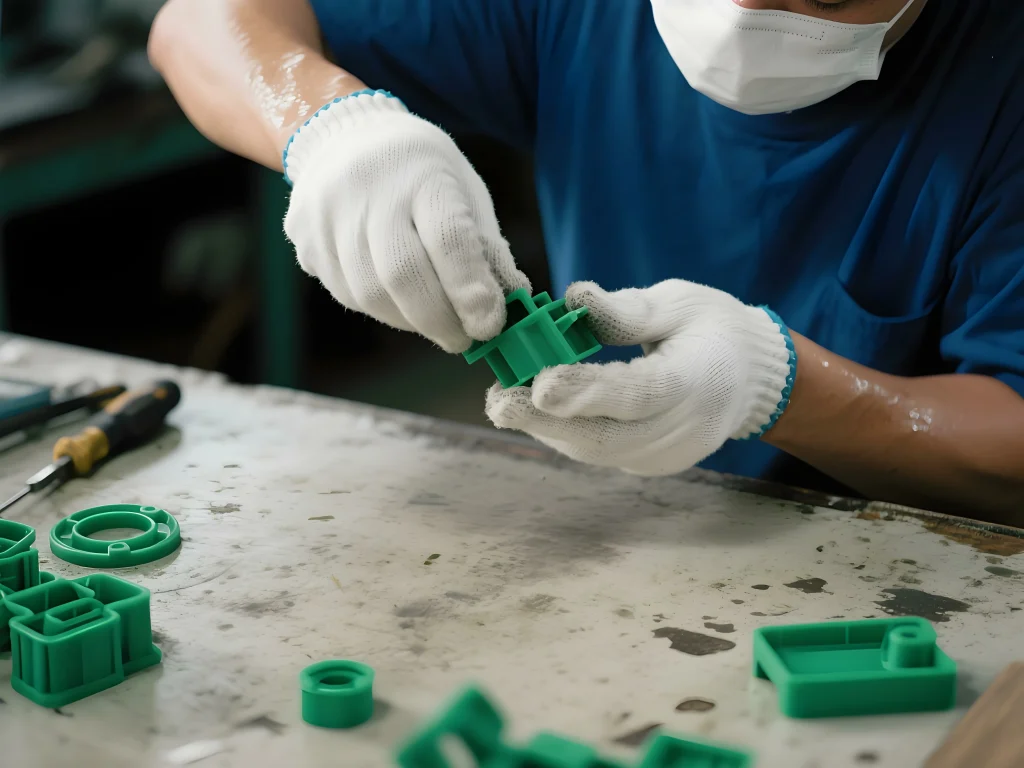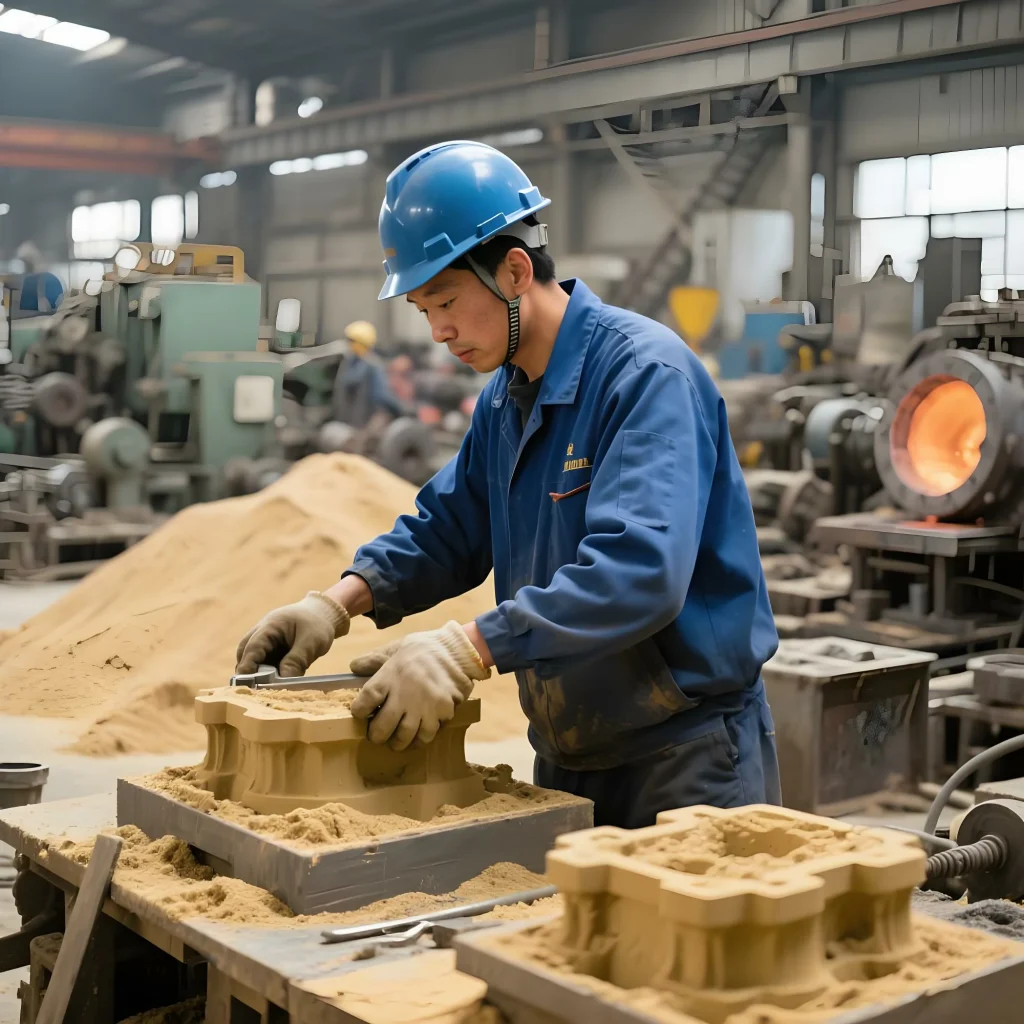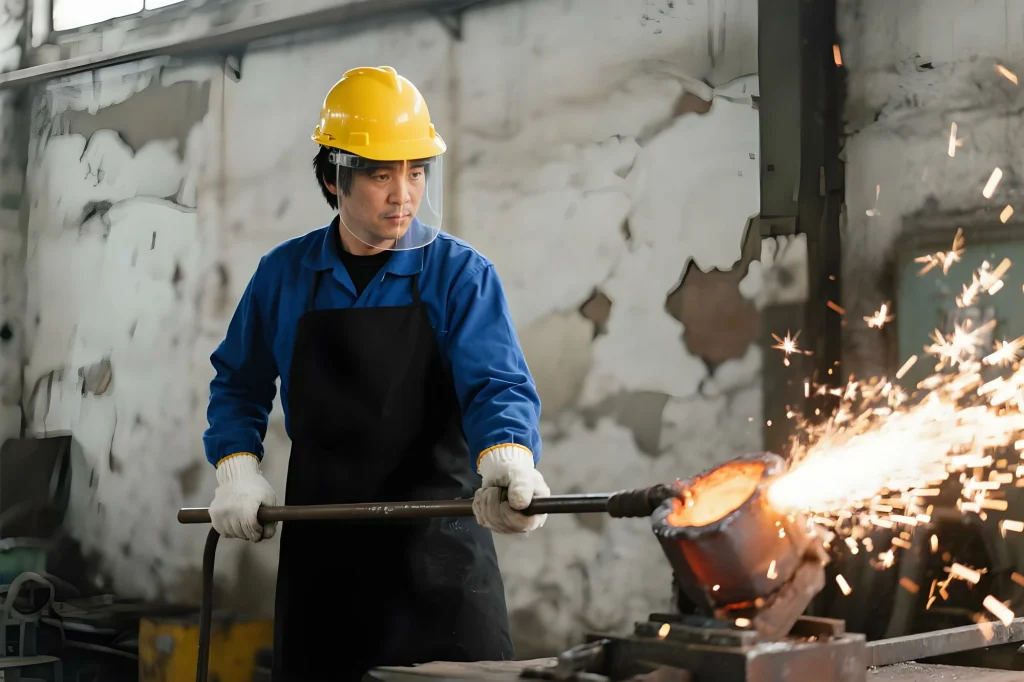The Definitive Guide to the Investment Casting Process
1.A Comprehensive Look at Investment Casting Methods, Materials & Benefits
Welcome to the definitive guide on the investment casting process. Whether you’re an engineer designing a new part, a procurement manager seeking reliable investment casting suppliers, or simply curious about how intricate metal components are made, this article provides a complete, expert overview.
At Welleshaft, we are a leading manufacturer of investment castings, specializing in creating high-precision parts for the world’s most demanding industries. This guide shares our expertise, covering everything from the foundational question, “what is investment casting,” to the complex steps and advanced materials involved in creating superior investment castings.
2.What is Investment Casting? A Foundation of Precision Manufacturing
We use investment casting, a highly versatile manufacturing process, where we coat a wax pattern with a refractory ceramic material. Once this ceramic shell hardens, we melt out the internal investment casting wax, leaving a precision cavity—the investment casting mold. We then pour molten metal into this hollow mold. After the metal solidifies, we break away the ceramic shell, revealing a net-shape or near-net-shape metal part.
This method, a cornerstone of precision metal casting, allows for the creation of investment casting components with complex geometries, fine details, and excellent surface finishes that are difficult or impossible to achieve with other casting methods.
Why Is It Called “Investment” Casting?
The term “investment” refers to the process of “investing” or surrounding the wax pattern with a ceramic material, known as a slurry. This ancient art, also famously called the lost wax investment casting process, dates back over 5,500 years. Today, Welleshaft has refined this historic technique to produce everything from mission-critical aerospace castings and defense castings to intricate investment casting jewelry and durable industrial gears, making it a vital modern manufacturing procedure.

3.The Step-by-Step Investment Casting Procedure at Welleshaft
Understanding the investment casting procedure is key to appreciating its value. Each of the investment casting process is meticulously controlled at our investment foundry to ensure the final product meets the highest standards of casting quality.
Step 1: Engineering & Design for Manufacturing (DFM)
The journey begins not on the foundry floor, but at the design table. Our first step is a comprehensive Design for Manufacturing (DFM) review. This collaborative process is crucial for ensuring cast component quality.
- Analysis:We evaluate print dimensions, tolerances, and the intended function of the part.
- Optimization: We provide feedback on how to optimize the design for the investment cast process, suggesting minor modifications that can improve part strength and reduce weight. This is a key part of our value-added investment casting services.
- Gating & Tooling: We determine the optimal placement for gates and runners to ensure a complete, sound fill when casting stainless steel or other alloys. This planning prevents defects and is a core element of our casting quality control process.
Step 2: Precision Mold & Tooling Creation
Once we finalize the design, we engineer and build the master casting tooling—a high-grade aluminum wax injection mold.
- In-House Expertise: At Welleshaft, our in-house tool and die shop designs and builds these molds, giving us full control over the investment casting mold design.
- Durability:These robust molds are engineered to produce millions of identical investment casting wax patterns, guaranteeing repeatability for high-volume production of both steel investment casting and aluminium investment casting parts.
Step 3: Wax Pattern Injection and Assembly
With the mold ready, we create the wax patterns.
- Injection: Specially formulated wax is injected into the mold cavity to create a perfect replica of the final part.
- Assembly: These patterns are then attached to a central wax runner system, forming a structure known as a “tree.” This allows us to produce multiple investment casting partsing a single pour, increasing efficiency and lowering part cost.
Step 4: Ceramic Shell Building
This is the “investment” stage. The wax tree is dipped into a ceramic slurry and coated with fine refractory sand.
- Layering: This dip-and-sand investment moulding processis repeated (typically 6-8 layers), with a controlled drying period between each coat. This creates a strong, laminated ceramic shell. The quality of these refractory materials for investment casting is critical for achieving a smooth surface finish.
- Curing: The completed shell is dried for 24-36 hours, allowing it to fully harden and gain the strength to withstand the casting process.
Step 5: Dewaxing (The “Lost Wax” Stage)
The hardened ceramic shell is placed into a high-pressure steam vessel called an autoclave. The high temperature and pressure quickly melt the wax, which drains out. This leaves a hollow, one-piece ceramic mold that is a perfect negative impression of the final parts—hence the name, the lost wax casting process.
Step 6: The Foundry Pour
The empty mold is now ready for molten metal.
- Preheating:The shell is preheated in a high-temperature oven to over 1000°C (1832°F). This removes any residual wax, strengthens the ceramic, and reduces thermal shock.
- Pouring:Molten metal, such as 300 series stainless steel or castable aluminum alloys, is poured into the shell, filling every detail of the mold cavity.
Step 7: Shell Removal and Part Separation
“After the metal cools, we reveal the cast metal parts. We break away the brittle ceramic shell from the metal tree using methods like high-pressure water jets and vibration. Then, we cut the individual investment cast parts from the central gating system.
Step 8: Finishing and Quality Assurance
We now send the raw castings for finishing operations.
- Gate Grinding:The small remnant of the gate is ground smooth.
- Heat Treatment:Parts may be heat-treated to enhance mechanical properties, like hardness or tensile strength.
- Secondary Operations:We offer a full suite of services, including machining, plating, and 300 series stainless steel deburring services.
- Inspection: This is the final and most critical stage of casting quality inspection. We perform rigorous checks, including dimensional analysis and NDT inspection services for castings.For high-spec clients like aerospace casting companies, we provide specialized testing such as nadcap liquid penetrant inspections for castings.

4.Investment Casting Materials: A Guide to Ferrous & Non-Ferrous Alloys
Welleshaft can produce custom investment cast parts from a vast array of metals. The choice of material depends on requirements for strength, corrosion resistance, weight, and temperature tolerance.
Table of Common Investment Casting Alloys
| Alloy Category | Common Grades & Types | Key Properties & Characteristics | Typical Applications & Industries |
| Stainless Steel | Austenitic (300 Series): 304, 316 SS investment castings Martensitic (400 Series): 420 SS, 440C PH Grades: 17-4 PH, 15-5 PH | Austenitic: Excellent corrosion resistance, non-magnetic.Martensitic: High hardness and strength, magnetic.PH: High strength, good toughness. | Food processing, marine hardware, medical investment castings, valves, firearm components. |
| Aluminum | A356, A357 | Lightweight, excellent corrosion resistance, good castability and machinability. | Aerospace castings, automotive castings, electronics housings, 1911 aluminum frame casting. |
| Carbon & Alloy Steel | 4140, 8620, 4340 | High strength, durability, wear resistance. Can be heat-treated for specific hardness levels. | Gears, tooling, construction machinery investment cast components, agricultural equipment. |
| Nickel-Based Alloys | Inconel, Monel, Hastelloy | Superior high-temperature strength, excellent corrosion and oxidation resistance. | Turbine blades, jet engine components, chemical processing equipment. |
| Copper-Based Alloys | Beryllium Copper, Bronze, Brass | High thermal & electrical conductivity, good corrosion resistance, non-sparking (BeCu). | Electrical connectors, marine components, plumbing fixtures, bearings. |
| Ductile Iron | 60-40-18, 80-55-06 | Excellent strength and ductility, comparable to steel but with better vibration damping. | Automotive components, pipe fittings, heavy machinery parts. |
| Cobalt-Based Alloys | Stellite (Cobalt-Chrome) | Extreme wear resistance, high-temperature hardness, excellent biocompatibility. | <ins>Cobalt chrome casting services</ins> for medical implants, cutting tools, engine parts. |
5.Key Industries & Applications for Investment Casting
The versatility of the investment casting method makes it ideal for a wide range of demanding applications.
-
Aerospace and Defense
We use aerospace investment casting to produce complex, lightweight, and high-strength components like turbine blades, structural brackets, and fuel system parts. Welleshaft is a trusted casting supplier for defense castings, meeting the most stringent quality and material specifications.
-
Firearms and Security
The investment casting casting method is ideal for producing intricate firearm components like triggers, hammers, and receivers. Its ability to create parts with excellent detail and strength makes it perfect for applications like the 1911 80 percent receiver casting and other critical hardware.
-
Medical and Dental
The ability to use biocompatible nickel casting and cobalt-chrome alloys makes investment casting a go-to process for the medical field. We use it to create surgical instruments, orthopedic implants, and dental fixtures.
-
Pumps, Valves, and Industrial Machinery
We widely use the stainless steel investment casting process for fluid-handling components.The smooth internal passages and corrosion resistance of cast stainless steelparts improve flow efficiency and longevity in pumps and valves used across many industries.
6.Key Benefits of Choosing Investment Casting
Engineers and designers choose investment casting for clear, compelling reasons.
- Design Freedom:The process allows for extremely complex geometries, including internal cavities and undercuts, that are impossible to machine or forge as a single piece.
- Superior Surface Finish: Investment casting shave a significantly smoother surface finish (typically 125 RMS) than sand casting, reducing secondary polishing.
- Tight Tolerances & Repeatability:The process is highly accurate, producing near-net-shape parts that minimize costly secondary machining.
- Cost-Effective for Complexity:For medium to high-volume runs of complex parts, investment casting is often more economical than fabricating a component from multiple pieces. When comparing investment casting vs sand casting, investment casting wins on detail. When comparing die casting vs investment casting, investment casting offers a far greater range of ferrous and non-ferrous alloys.

7.People Also Ask
-
What is the difference between Austenitic and Martensitic stainless steel?
Austenitic stainless steel (like the 300 series stainless steel) offers excellent corrosion resistance and is typically non-magnetic. We use martensitic stainless steel (like the 400 series stainless, including 420 SS steel) for its high strength and hardness after heat treatment, and it remains magnetic. We choose it based on whether corrosion resistance or mechanical strength is the primary concern.
-
How accurate is the investment casting process?
Investment casting is a form of precision casting, capable of achieving very tight tolerances, often as close as +/- 0.005 inches per inch. This high degree of accuracy creates near-net-shape parts, which drastically reduces the need for expensive secondary machining and helps in how to lower investment casting cost.
-
What are the main factors that influence investment casting cost?
The primary cost drivers for investment castings are:
- Tooling Cost (the initial investment in the mold).
- Part Complexity (more complex parts require more intricate tooling and handling).
- Material Choice (alloy prices vary significantly)
- Production Volume (higher volumes amortize the tooling cost over more parts, reducing the per-piece price).
-
Can you use investment casting to make large parts?
While we excel at producing small, intricate parts through investment casting, we can also use it for larger components, with some foundries able to pour parts weighing over 200 lbs (90 kg).The primary limitations are the size of the shell-building equipment and the foundry’s melt capacity.
8.Why Choose Welleshaft as Your Investment Casting Manufacturer?
When your project demands precision, quality, and reliability, you need an expert manufacturing partner. As a leading China investment casting company, Welleshaft delivers comprehensive metal casting services from concept to completion.
Our commitment to a robust casting quality control system, combined with our in-house tooling and advanced finishing capabilities, ensures every part we produce meets your exact specifications.
Partner with Welleshaft for Your Next Project
Still have questions about the investment casting process or how it can benefit your application?
Contact us today to start an engineering discussion. Or, if you have a design ready, request a quote on your precision metal component and our team will provide a competitive proposal promptly. Let Welleshaft be your trusted partner for all your stainless investment casting and alloy steel investment castings needs.

